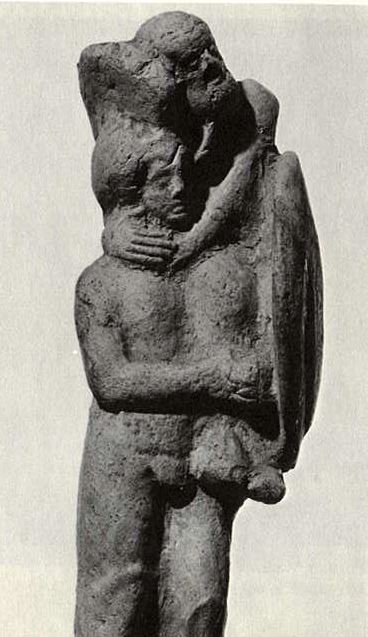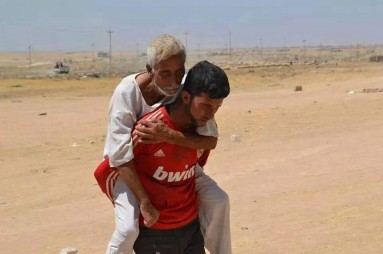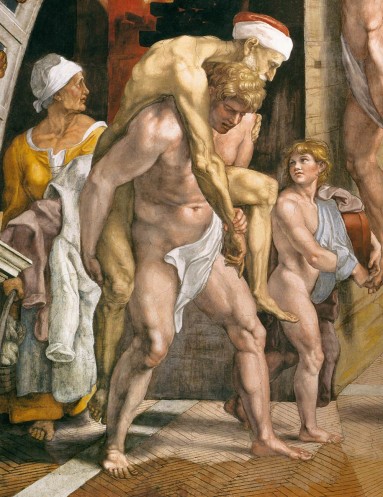Do you love me? he asks one. If I want him to remain alive, what is that to you? he says of another, and then that other reveals himself as the author of the words we are reading. The twenty-first chapter of the Gospel of John is strange (a succession struggle, like those in King Lear or in Kurosawa's films). It is perhaps strangest when Christ prophesies Peter's death, When thou wast young, thou girdest thyself, and walkedst whither thou wouldest: but when thou shalt be old, thou shalt stretch forth thy hands, and another shall gird thee, and carry thee whither thou wouldest not.
A little over a century earlier, Virgil wrote, of Aeneas recounting to Dido his family's escape from Troy, Come then, dear father, clasp my neck: I will carry you on my shoulders: that task won’t weigh on me. Whatever may happen, it will be for us both, the same shared risk, and the same salvation.
Anchises, the father, carried by the one he had once carried, was to die far from the battle, in his old age, in Sicily. The story of Aeneas carrying his father is a vital fiction of Western myth, and was useful to Shakespeare who wrote, of Cassius' boast to Brutus that he'd once saved Caesar from drowning— Ere we could arrive the point proposed, Caesar cried, Help me, Cassius, or I sink! I, as Aeneas, our great ancestor, did from the flames of Troy upon his shoulder the old Anchises bear, so from the waves of Tiber did I the tired Caesar.
And if war came, again, and a son were to carry a father, again?
Of the painting by Raphael, or as now seems more likely, Giulio Romano, of the ancient fire in the Borgo, Vasari wrote, An infirm old man, distraught by his weakness and the flames of the fire, being carried (as Virgil describes Anchises being carried by Aeneas) by a young man.
Between the image made in Etruria around 500 BCE and the painting from Raphael's workshop two thousand years later, there is hardly any change in the form (one does not carry a father the way one carries a child). The form is the same, as are the pathos and the horror, in this formula of a son carrying on his back his aged father from a crisis that imperils them both, the same shared risk, as Virgil wrote, the same salvation. May it not be you. May it not be your father.


